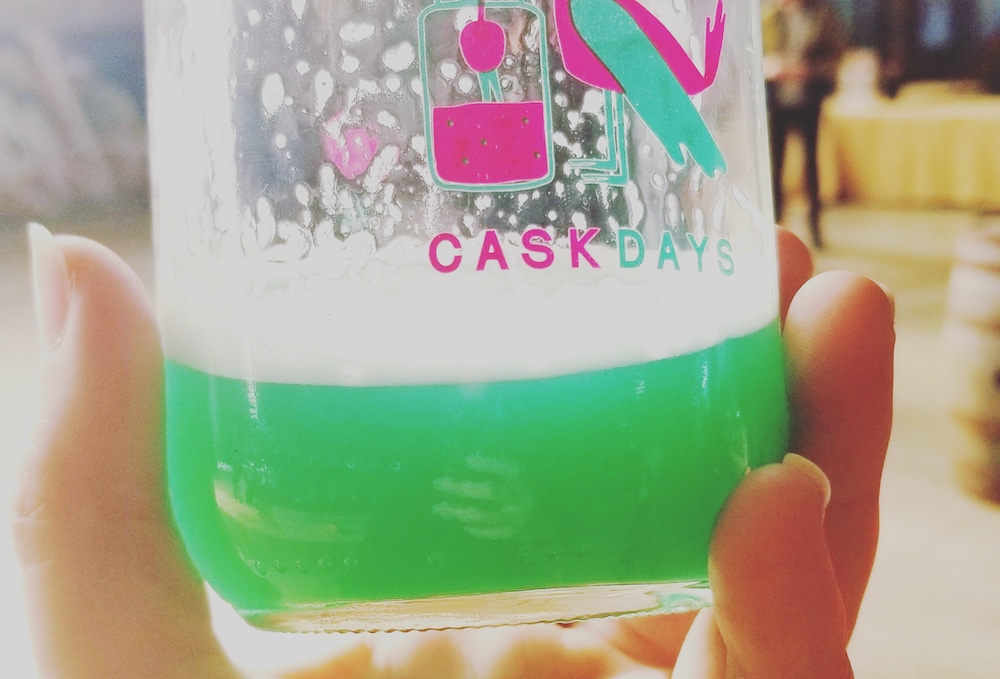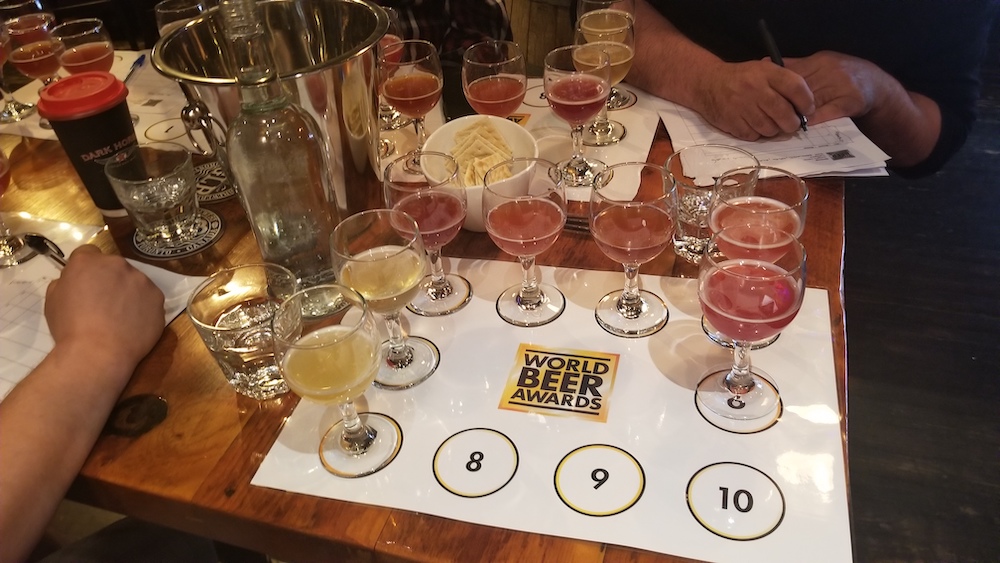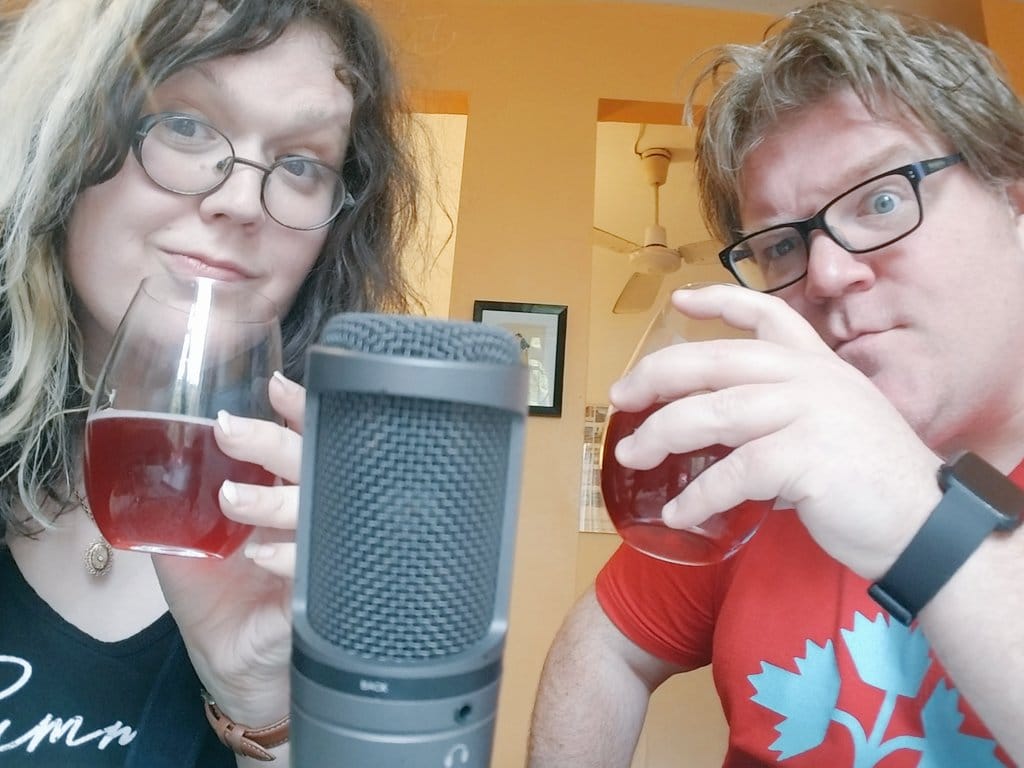Beer writers Robin LeBlanc and Jordan St. John deliver us another of their monthly It’s Your Round columns.
Jordan St.John: What the hell is Lactose, anyway?
Robin LeBlanc: Oh. Um. Well. Ahem. You see, Jordan, when a glucose molecule and a galactose molecule love each other very much they…
J: I’m pretty sure there’s a cow involved.
R: Well, a mammal at any rate. Though we don’t get much call for rat milk these days.
J: Full of nutrients. Full of calcium. Has a shelf life four times as long as regular milk. Mostly because no bugger’ll drink it.
R: Why this sudden and frankly uncomfortable interest in lactation?
J: Well, it’s just that I’ve been talking to my colleagues over in wine, and they never seem to have to deal with new ingredients popping up in their discipline. It’s just grapes. Year in, year out. Grapes always and forever.
R: I think some variety can come about, but agreed. I seem to recall one point where Garrett Oliver was talking about events he’d take part in that pitted wine against beer. Beer would always end up being the winner because wine had only a set amount of flavours to work with where beer was seemingly unlimited.
J: It’s not just flavour, either. As part of the instruction at George Brown, I’m explaining to people about the Lovibond Company. They were stained glass manufacturers who came up with a standard colour spectrum for beer. Sort of pale straw down to deep brown, but in gentle gradation. One of the students asked, “So what happens when beer is suddenly pink?”
R: I do take your point. While styles have changed so much throughout the centuries, things do seem to be going pretty alarmingly fast in terms of flavour development, with everything but the kitchen sink being put into a beer. Sometimes the beer is even aged in a kitchen sink for that flavour.
J: Faint notes of clorox and damp sponge, with a slight metallic tinge.
R: Indeed. But I feel like this is going back to something that stuck with us over the years in that in order to catch some of the flavours of a good beer, particularly these days, you need to work your palate. And that doesn’t just mean drinking a lot of other beers, but having a sensory memory of the individual ingredients that are being added.
J: It becomes a real problem. The orthodoxy of beer tasting and instruction regarding that discipline sort of plateaued sometime around 2010. There have been a lot of books that reiterate information about malt and hops, but the summation of the body of knowledge is more or less impossible due to the constant, near manic innovation that brewers find themselves engaged in.
R: We’re a long way’s away from notes of citrus with a toasted caramel backing or stouts that have chocolate and coffee. Now it’s dragonfruit and kiwi.
J: Those things still exist, but at this point if you experienced notes of chocolate or coffee in a stout, it’d be about 50/50 as to whether they were from actual chocolate or coffee. The prevailing wisdom doesn’t.
My question would be whether anyone has the gravitas to define the new canon. See, Michael Jackson used to write about beer and he could declare something a classic and lo and behold, a classic! Because of the sheer volume of things that exist, does anyone have the oversight to be able to declare something to be so?
R: With respect, I’m not sure that such a task can be done with any weight these days. Michael Jackson wrote in a time where you could actually declare something a classic and because there was no one like him at that point it could be regarded so. These days the canon is chaos, with all of the negatives and positives that it brings. Trends and styles in beer are, much like the actual drink, fluid.
J: Does this mean I’m going to have to redesign my slides again, Robin?
R: Probably, but look, like all things in history the old influences the new. While we may be seeing so many goofy stunt beers these days with god knows what put into them, the brewmaster behind it, in all likelihood, was influenced by classic styles. When Michael Jackson talked about beer he referenced so many styles that people hadn’t even heard of and never tried. He effectively broadened the horizons of flavour for so many. Now I think we’re in the logical progression of that to see what flavours lay beyond the borders of our taste.
J: A truly staggering bit of rhetoric there on behalf of the Blueberry Maple Pancake Stout, Robin.
R: Oh, I didn’t say that these beers would be particularly good. But I see it very similar to the progression of music. You need to learn the fundamentals of jazz in order to be good enough to freestyle, but not everyone is Miles Davis, you know?
J: Guava Puree Sour IPA: The Ornette Coleman of beer.
R: But that’s the point. When we think of the music of our past we tend to think of mostly the highlights. The good artists, albums, and songs that stuck out in our minds well into our adulthood. What we don’t think about are the thousands upon thousands of releases that came out that were utter crap, ripping on a more successful artist, too poppy, or an obvious money grab to the point where it wasn’t even novel. It’s the ones who managed to rise up above all of the nonsense that defines what is an excellent song or even a new genre. The same goes for beer.
J: Well, at least I know that neither of us would ever create a beer with Lactose in it. Right, Robin?
R: Well, funny you should mention that… how about you get us a beer and we’ll have a talk?







